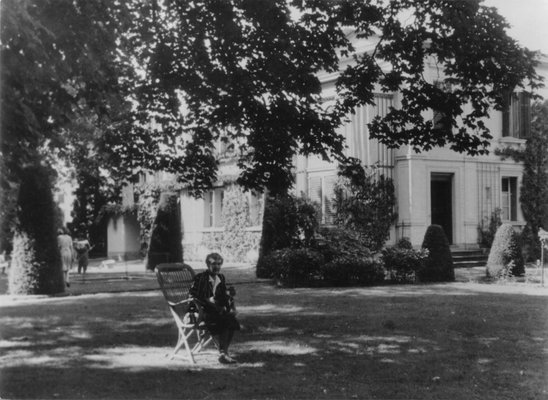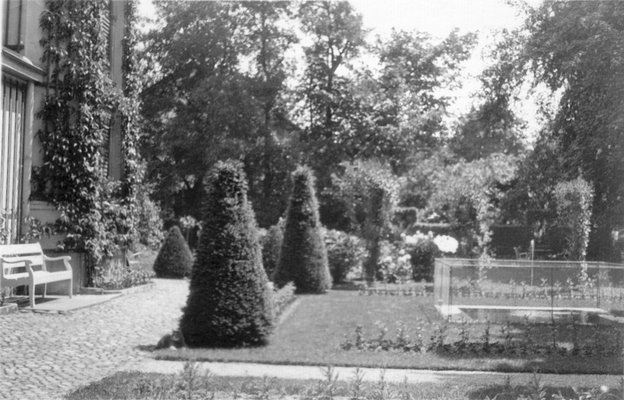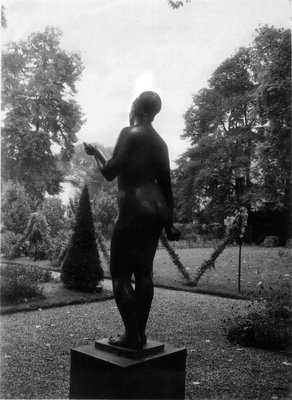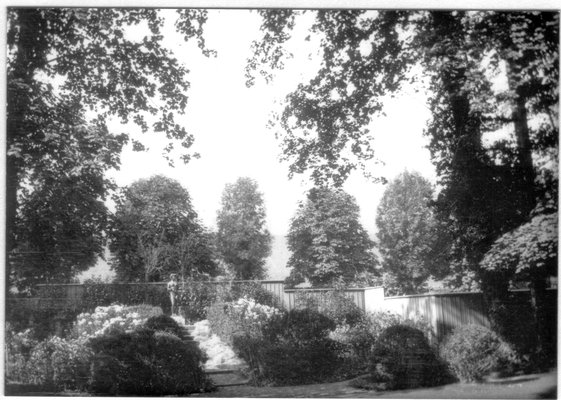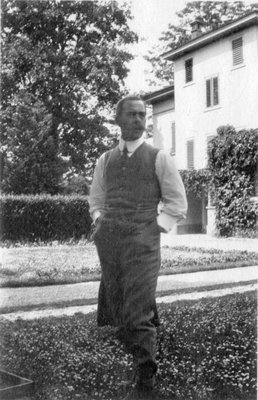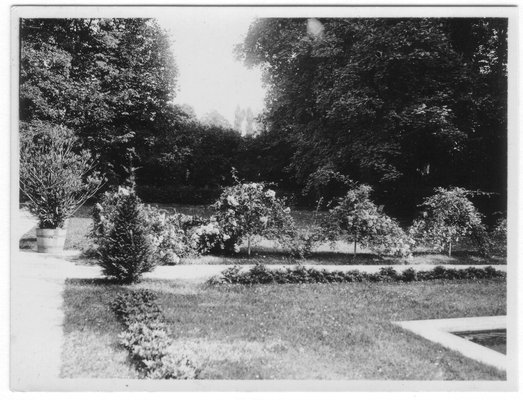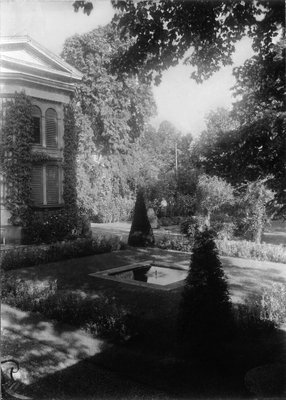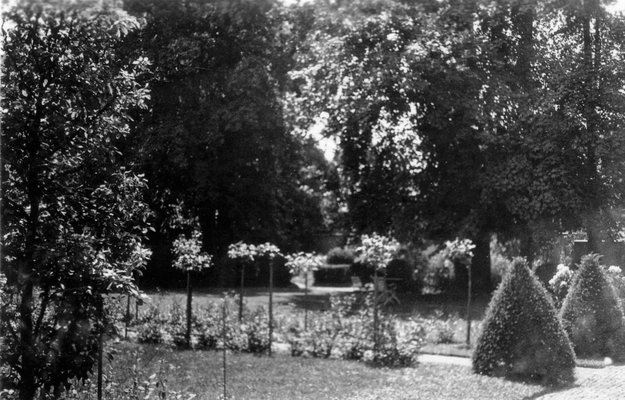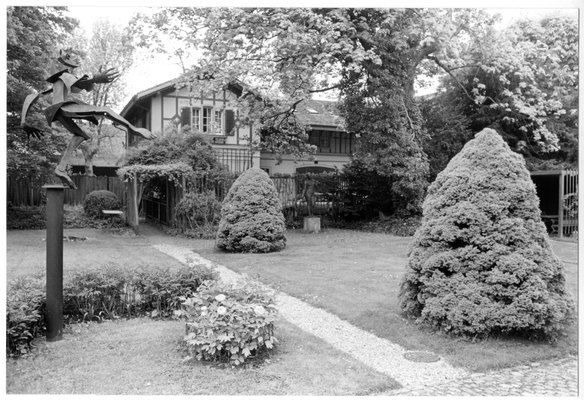The garden
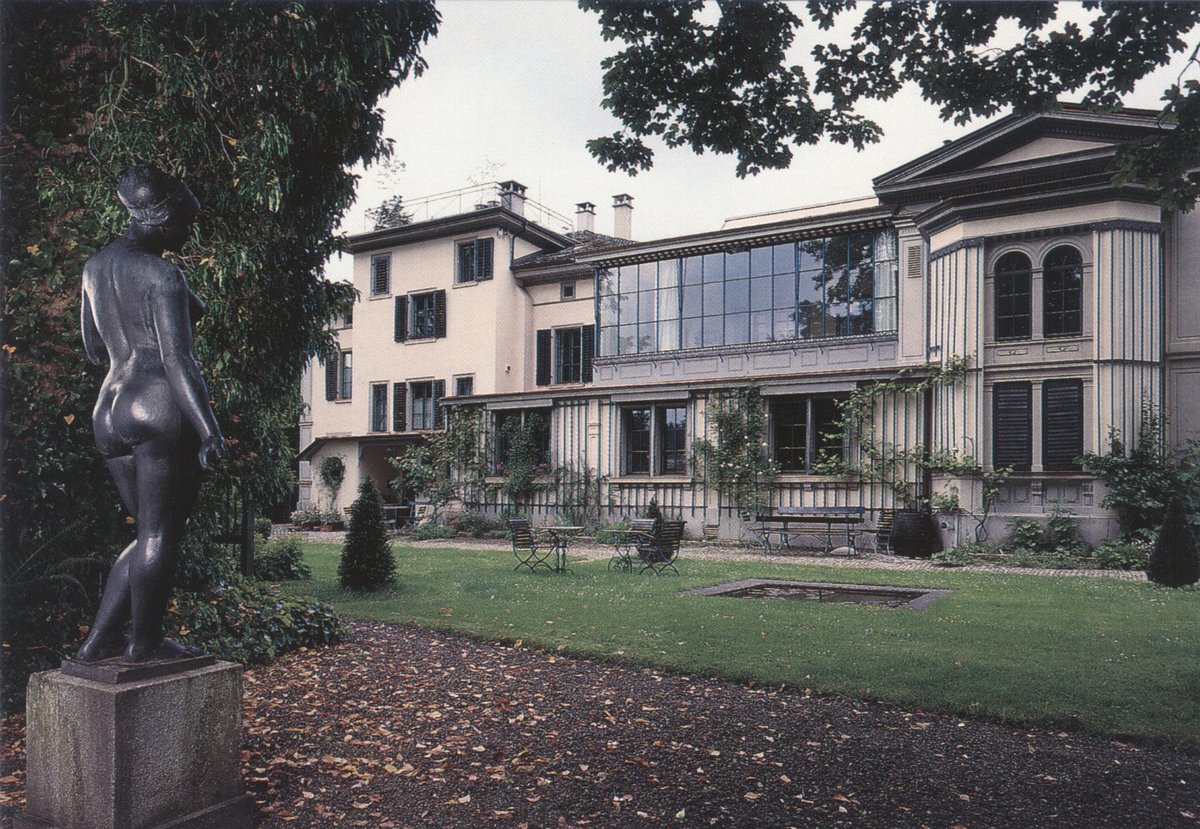
The Villa Flora before the recent renovation
Photo: Peter Engeler
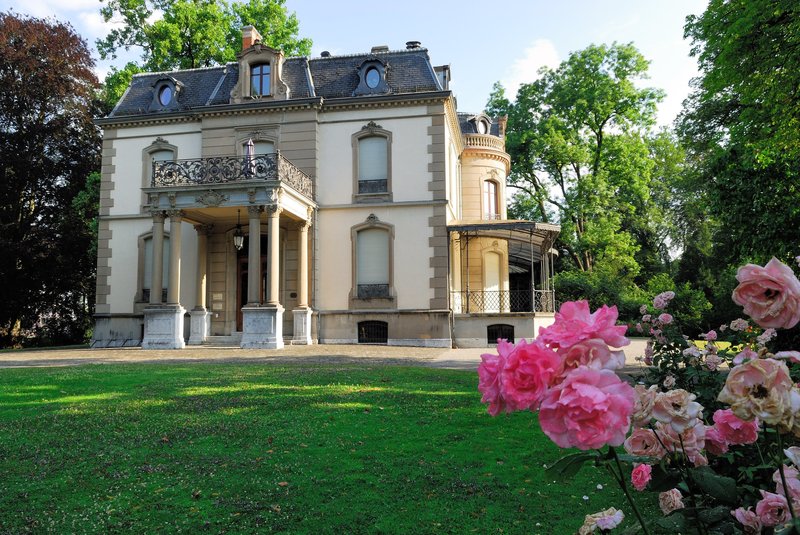
The Villa Bühler and its park
The garden of the Villa Flora used to be a landscape garden that corresponded to the so-called 'natural garden style'. This design concept was based on the idea that nature should appear as natural as possible and function like a walk-in landscape painting. A walk through it should be varied, and so the paths were curved and winding, also known as the 'Bretzel-manner'. The small hill, created from the excavated material when the cellar was built, dates back to this time. The mighty beeches, maples and lime trees also originate from that era.
This was in keeping with the taste that prevailed in many Winterthur villas and their gardens, some of which still exist today, such as in the park of the Villa Bühler with the coin cabinet or at the conservatory in the Villa Rychenberg.
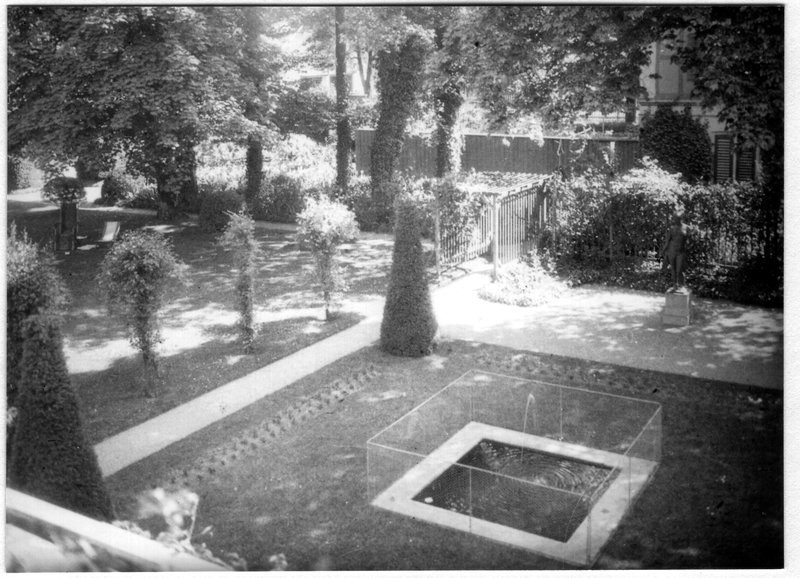
View from the veranda into the garden, around 1940
The reason for the redesign of the Flora garden was art: in the autumn of 1916, the Hahnlosers acquired sculptures by Aristide Maillol, two of which they wanted to place in the garden, Été and Pomone. Today, both figures are back in their original location. Hedy Hahnloser had a niche framed with wooden slats built especially for the Été. And in the winter of 1918, the small hill in the landscape garden was transformed into an octagonal shape and the Pomone was placed on the hilltop.
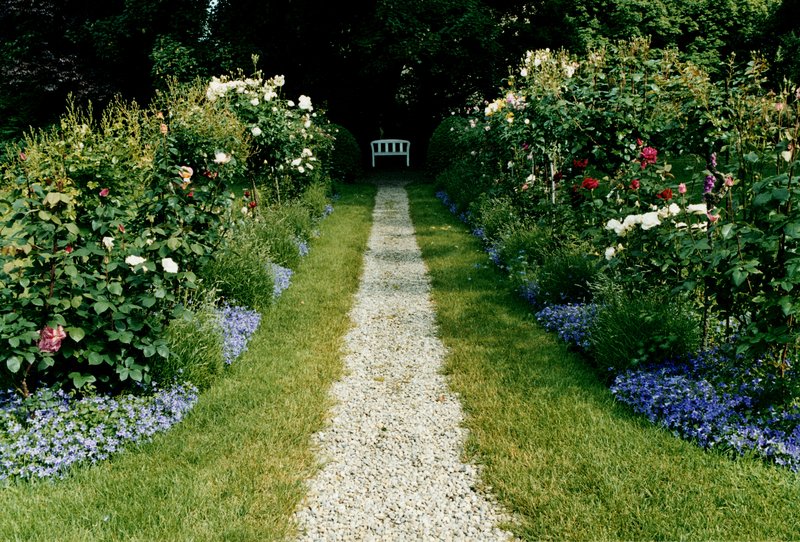
The small avenue of roses, with a bench waiting at its end.
Richard Bühler, Hedy Hahnloser's cousin and president of the Swiss Werkbund, was an important discussion partner for the redesign of the garden. He shared Hedy's passion for the creative and beautiful and had worked intensively with gardens. In 1910, he gave a lecture on the subject at the Kunstverein – of which he was also president – criticising the traditional landscape garden as an imitation of nature. He demanded that humankind, indeed modernity, should become visible: "The garden should serve human beings and therefore clearly express the desired goals in its forms."
"The genuinely good garden is also a work of art and as such should bear all its own characteristics, which are order and regularity and rhythm and the visualisation of its purpose in clear forms."
Richard Bühler
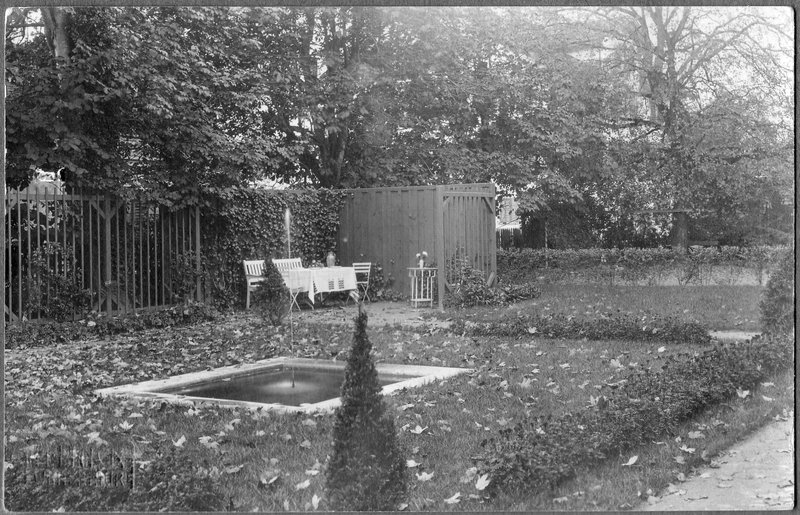
The autumn garden in a historical photograph from 1914
Following these principles, the entire garden of the Flora was subdivided according to geometric patterns. The paths of the landscape garden were straightened and brought into an orthogonal relationship with each other. A square fountain was placed on the axis of a quadrangle of lawn adorned with flowers and brought into a linear relationship with the sculpture.
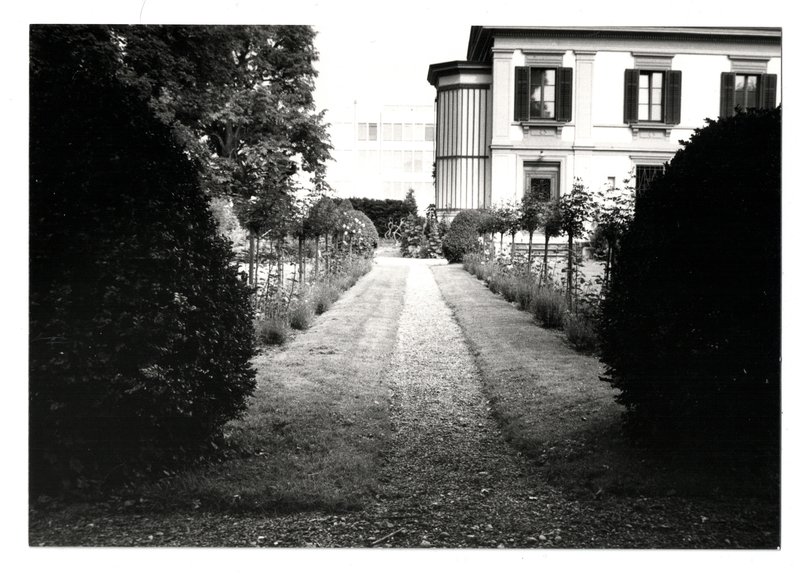
Straight paths lead through the garden
As a result, the garden also reflected a new concept of design; like the interior, it also followed geometric patterns. While scrolls and ornamentation had become obsolete in the interior, the apparent natural forms of the landscape garden became obsolete on the outside. House and garden, inside and out, thus grew even closer together to form a contemporary synthesis of the arts.
Hedy Hahnloser altered parts of the garden in the 1940s. Some of the garden paths were made narrower, the floral decorations were reduced and the austerity of the architectural garden was softened. However, the overall layout can still be experienced today in its contemporary form.
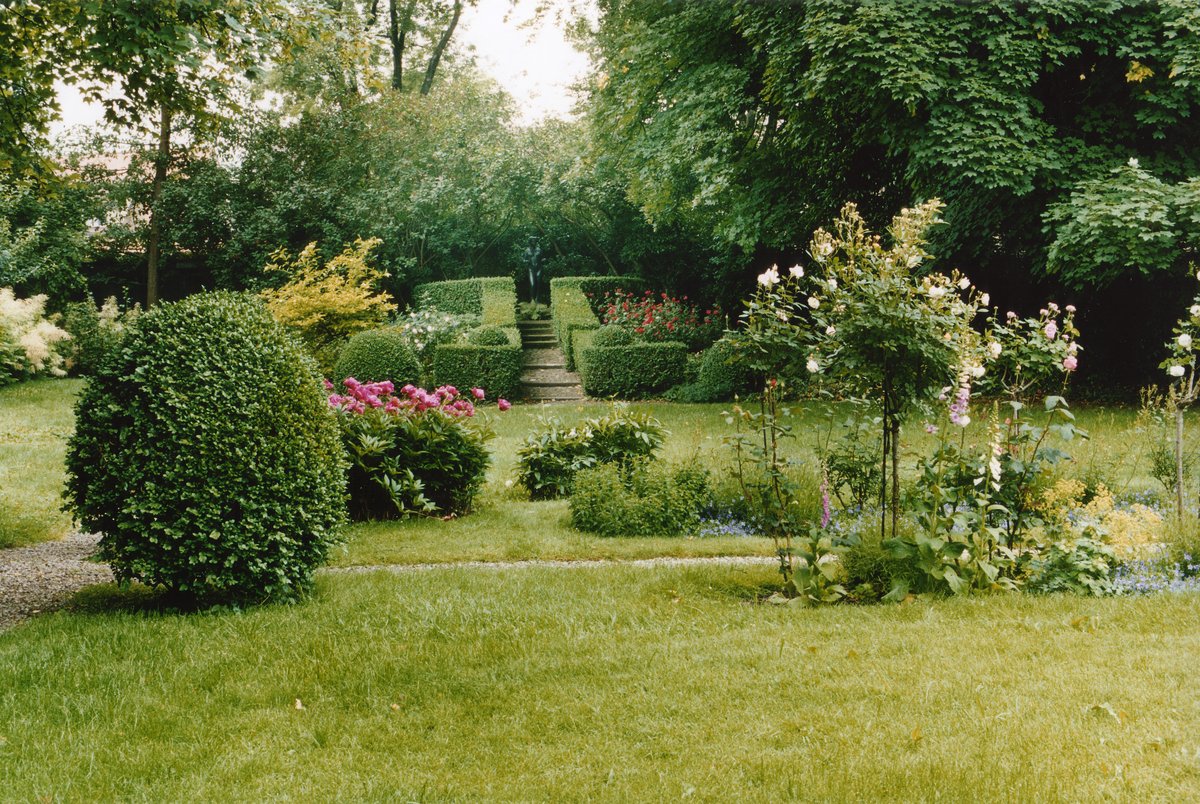
The blooming garden in a photo from around 2010



